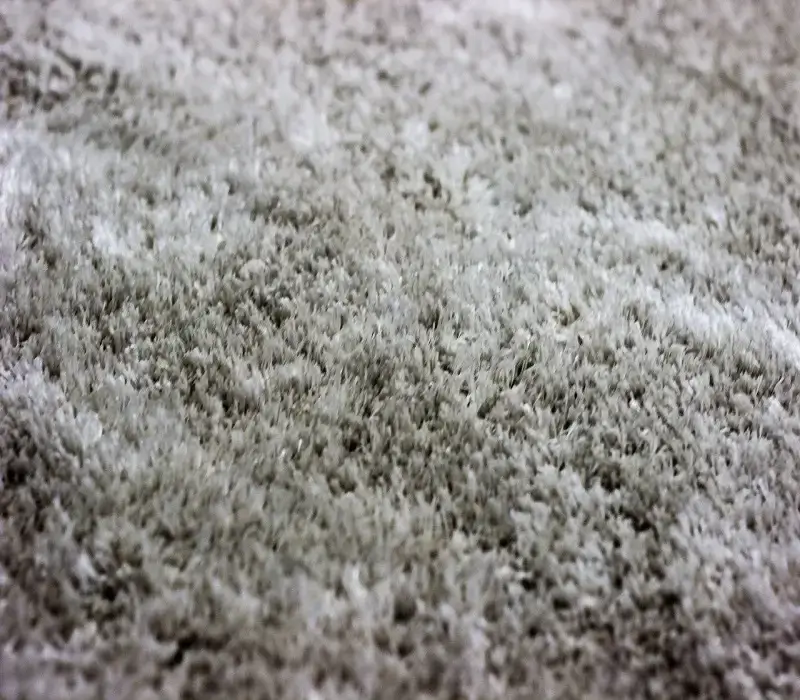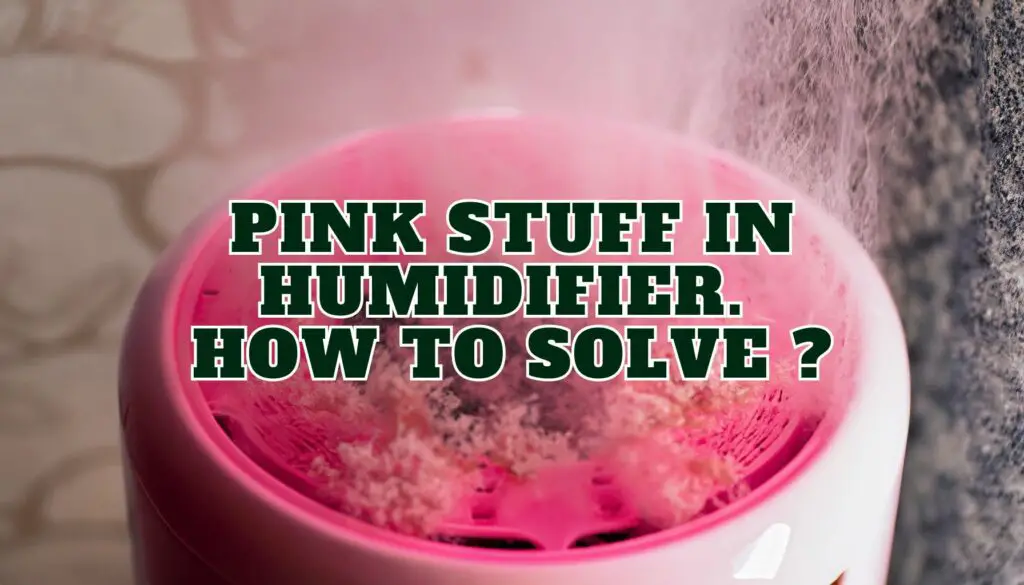
A humidifier is a valuable appliance that helps maintain optimal humidity levels in indoor spaces, promoting respiratory health and preventing issues such as dry skin and irritated nasal passages. However, users may encounter an unexpected problem when they notice a pink residue accumulating in their humidifiers. This pink stuff is often referred to as “pink slime” or “pink mold,” and it can be concerning for those who want to ensure the cleanliness of their humidifier and the air it disperses. In this article, we will explore the causes of pink residue in humidifiers and provide effective solutions to address and prevent this issue. So what is pink stuff in humidifier ?
Pink Residue in Humidifier
Pink residue in a humidifier is a common issue characterized by the presence of a pink or reddish slime-like substance. This phenomenon is often referred to as “pink slime” or “pink mold,” though it is not actually mold but rather a type of bacteria. The primary culprit behind this pink residue is a bacterium known as Serratia marcescens.
What is Pink Mold?
Pink mold is a common term for a type of bacteria known as Serratia marcescens. Despite its name, Serratia marcescens is not a mold; it is a Gram-negative bacterium. The pink or reddish coloration that gives it the name “pink mold” is a characteristic feature of this bacterium.
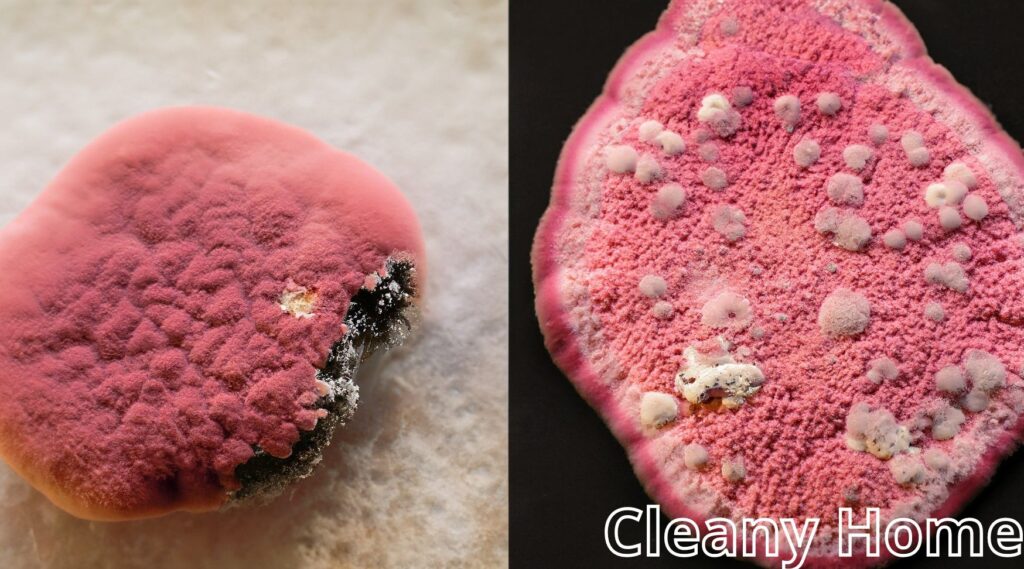
Characteristics of Pink Mold:
- Color. The distinguishing feature of pink mold is its pink or reddish color. This color is due to the production of a pigment called prodigiosin by Serratia marcescens.
- Texture. Pink mold typically appears as a slimy or gelatinous substance. It can be found on various surfaces, including bathroom fixtures, kitchen appliances, and, as discussed earlier, in humidifiers.
- Odor. Serratia marcescens is known to produce a distinct odor, often described as earthy or musty. This odor may be noticeable in areas where the bacterium is present.
Where Pink Mold is Found:
- Bathrooms. Pink mold is commonly found in bathrooms, especially on surfaces like shower curtains, tiles, and grout. The warm and moist environment provides an ideal breeding ground for this bacterium.
- Kitchen Appliances. It can also appear in and around kitchen appliances, such as dishwashers and refrigerators, where moisture is present.
- Humidifiers. Pink mold is a particular concern in humidifiers. When these devices are not cleaned regularly and are exposed to moisture, Serratia marcescens can proliferate, leading to the development of pink slime in various humidifier components.
Can Pink Mold in Humidifier Make You Sick?
While pink mold in a humidifier, typically caused by the bacterium Serratia marcescens, is generally not considered a serious health threat for most individuals, it can potentially cause health issues, especially for those with compromised immune systems or respiratory conditions. Here are some factors to consider:
- Respiratory Irritation. Serratia marcescens can release airborne particles, and inhaling these particles may lead to respiratory irritation. This can be particularly problematic for individuals with asthma, allergies, or other respiratory conditions.
- Weakened Immune Systems. Individuals with weakened immune systems, such as the elderly, young children, or those undergoing medical treatments that suppress the immune system, may be more susceptible to infections caused by bacteria like Serratia marcescens. While the bacterium itself is not highly pathogenic, it can pose a risk in individuals with compromised immunity.
- Allergic Reactions. Some individuals may be allergic to components of the bacteria or its byproducts, leading to allergic reactions. Common symptoms of allergic reactions may include sneezing, runny nose, itchy eyes, or skin irritation.
- Secondary Infections. In rare cases, exposure to Serratia marcescens or the conditions that support its growth could contribute to secondary infections. This is more likely to occur in individuals with weakened immune systems.
What Causes Pink Mold?
Pink mold is primarily caused by the presence of a bacterium called Serratia marcescens. Despite its name, Serratia marcescens is not actually a mold; it is a Gram-negative, rod-shaped bacterium. This bacterium is known for its distinctive pink or reddish pigmentation, which gives rise to the term “pink mold.” Several factors contribute to the growth and proliferation of Serratia marcescens, leading to the appearance of pink mold in various environments. Here are the key causes:
- Moisture and Damp Conditions. Serratia marcescens thrives in moist and damp environments. Areas with high humidity levels or where water is present provide an ideal breeding ground for this bacterium. Common places where pink mold may develop include bathrooms, kitchens, and areas around water fixtures.
- Nutrient-Rich Environments. Serratia marcescens can utilize a variety of nutrients for growth. In humidifiers, for example, the presence of organic material and minerals in the water can serve as nutrients, promoting the growth of the bacterium. This is especially true in environments with hard water, where mineral deposits can accumulate.
- Contaminated Water Sources. Using contaminated or unfiltered water in appliances like humidifiers can introduce bacteria into the system. Serratia marcescens may be present in the water supply, and when it enters the humidifier, it can multiply and lead to the development of pink mold.
- Lack of Regular Cleaning. Failure to clean and maintain appliances or surfaces that come into contact with water can contribute to the growth of pink mold. Humidifiers, shower curtains, and other items prone to moisture should be cleaned regularly to prevent the accumulation of bacteria.
- Biofilm Formation. Serratia marcescens is capable of forming biofilms, which are thin layers of microorganisms that adhere to surfaces. These biofilms can develop on various materials, including plastics and metals, providing a protective environment for the bacteria to thrive and resist removal.
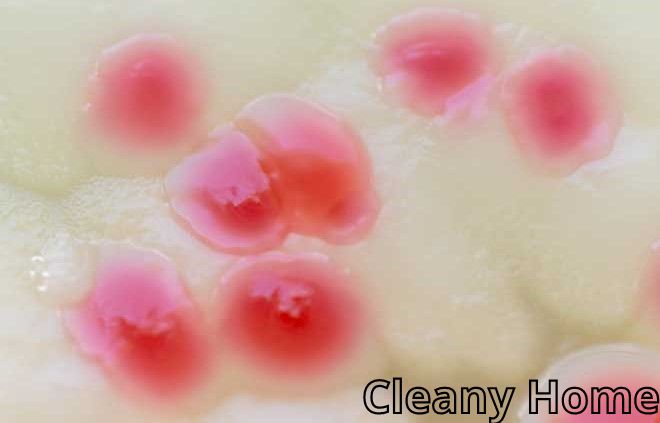
Prevention and Control:
To prevent the formation of pink mold caused by Serratia marcescens, consider the following measures:
- Regular Cleaning. Clean and disinfect areas prone to moisture regularly. This includes bathroom surfaces, kitchen appliances, and humidifiers. Follow the manufacturer’s instructions for cleaning these items.
- Use Distilled or Filtered Water. When using water in appliances like humidifiers, use distilled or filtered water to reduce the introduction of impurities and minerals that can support bacterial growth.
- Frequent Water Changes. Empty and refill water containers regularly to prevent stagnant water, which can create an environment conducive to bacterial growth.
- Proper Ventilation. Ensure proper ventilation in bathrooms and kitchens to reduce humidity levels. Good airflow helps prevent the buildup of moisture that encourages the growth of pink mold.
- Address Water Leaks. Repair any leaks promptly to eliminate potential water sources for bacterial growth.
By addressing these factors and adopting preventive measures, you can minimize the conditions that contribute to the development of pink mold and maintain a cleaner and healthier environment.
How Do Get Rid Of Pink Stuff In Humidifier?
Getting rid of pink stuff, often referred to as “pink slime” or “pink mold,” in a humidifier requires thorough cleaning and disinfection. Here’s a step-by-step guide to help you effectively eliminate the pink residue from your humidifier:
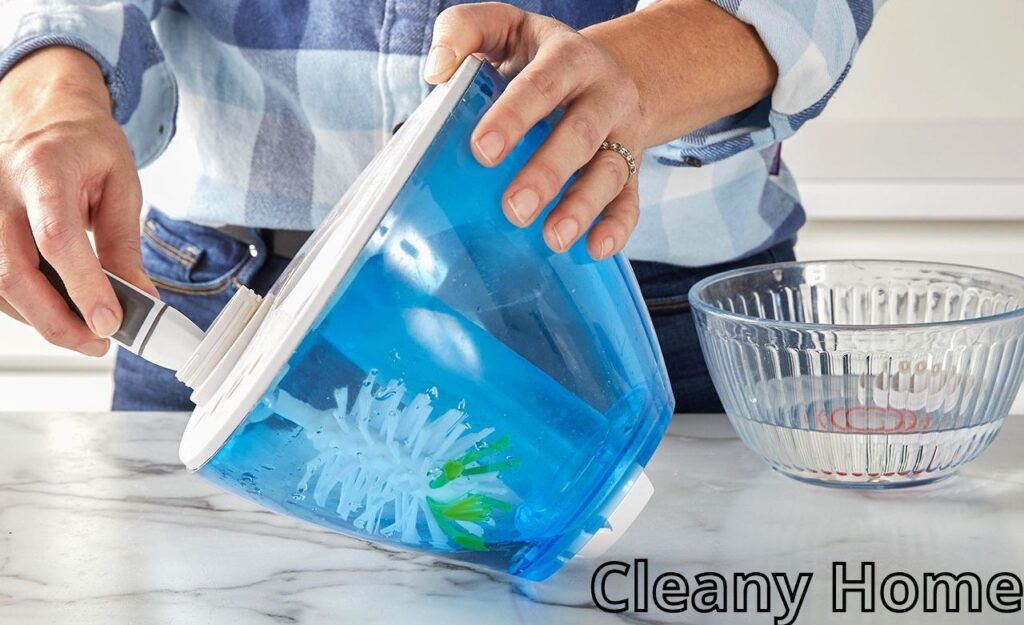
Step 1: Gather Materials
- Mild Detergent: Choose a mild dish detergent or a specialized humidifier cleaning solution.
- White Vinegar or Hydrogen Peroxide: These substances have natural disinfectant properties.
- Soft Brush or Cloth: For scrubbing and wiping down surfaces.
- Water: Distilled or filtered water is preferable for cleaning to avoid introducing impurities.
- Soft Toothbrush or Cotton Swabs: Useful for reaching into smaller, hard-to-reach areas.
Step 2: Disassemble the Humidifier
Follow the manufacturer’s instructions for disassembling your humidifier. This typically involves removing the water tank, filter, and any other removable parts.
Read also:
- The best humidifier for dogs? Here it is!
- Say Goodbye To Snoring: Best Humidifier For Sleep Apnea Sufferers
Step 3: Empty and Rinse
Empty any remaining water from the water tank and thoroughly rinse it with clean water. Repeat this process for other removable parts.
Step 4: Clean with Mild Detergent
- Prepare a solution of mild detergent and water.
- Use a soft brush or cloth to scrub the affected areas, such as the water tank and filter. Pay special attention to spots with visible pink residue.
- Rinse the components thoroughly with clean water to remove any detergent residue.
Step 5: Disinfect with Vinegar or Hydrogen Peroxide
- Vinegar Method:
- Mix equal parts white vinegar and water.
- Fill the water tank with the vinegar solution and let it sit for at least 30 minutes.
- Use a soft brush or cloth to scrub any remaining pink residue.
- Rinse the components thoroughly with clean water.
- Hydrogen Peroxide Method:
- Use a 3% hydrogen peroxide solution.
- Fill the water tank with the peroxide solution and let it sit for at least 30 minutes.
- Scrub as needed with a soft brush or cloth.
- Rinse thoroughly with clean water.
Step 6: Scrub Small or Hard-to-Reach Areas
For intricate parts or areas that are difficult to reach, use a soft toothbrush or cotton swabs soaked in the cleaning solution to scrub away any remaining pink residue.
Step 7: Sunlight Exposure
Allow the disassembled components, especially the water tank, to air-dry in direct sunlight. Sunlight has natural antibacterial properties and can help inhibit the growth of microorganisms.
Step 8: Reassemble and Test
Once all components are completely dry, reassemble the humidifier according to the manufacturer’s instructions. Fill the water tank with clean water and run the humidifier briefly to ensure that there are no lingering cleaning agents.
Step 9: Regular Maintenance
To prevent the recurrence of pink residue, establish a regular cleaning routine for your humidifier. Follow the manufacturer’s guidelines for maintenance, use distilled or filtered water, and empty and refill the water tank daily.
By following these steps and maintaining a consistent cleaning schedule, you can effectively get rid of pink stuff in your humidifier and ensure that it operates efficiently and hygienically.
Conclusion
Preventing and removing pink mold involve maintaining cleanliness and proper hygiene practices. This includes regular cleaning and disinfection of surfaces, especially in areas prone to moisture. In the case of humidifiers, following the manufacturer’s cleaning instructions, using clean water sources, and implementing regular maintenance can help prevent the growth of pink mold.
When encountered, pink mold can be removed with cleaning solutions. For surfaces, a mixture of water and a mild detergent may be effective. In humidifiers, disinfecting solutions like vinegar or hydrogen peroxide, following recommended dilution ratios and procedures, can help eliminate the bacteria and prevent its recurrence.
In summary, pink mold refers to Serratia marcescens, a bacterium known for its pink coloration. While it is not usually harmful to healthy individuals, it can be problematic in terms of cleanliness and may indicate the need for improved hygiene practices in affected areas. Regular cleaning and proper maintenance can help prevent and address the presence of pink mold.
Why does my humidifier have pink residue?
The pink residue in your humidifier is likely caused by the presence of a bacterium called Serratia marcescens. This bacterium thrives in damp conditions and can grow in the water tank and other humidifier components if regular cleaning and maintenance are not performed. Using contaminated water, such as tap water with minerals, can contribute to the formation of the pink slime. Regular cleaning, using distilled or filtered water, and following proper maintenance practices can help prevent the recurrence of the pink residue.
Is pink mold harmful?
Pink mold, typically caused by the bacterium Serratia marcescens, is generally not harmful to healthy individuals. However, it can cause respiratory irritation or allergic reactions, especially in individuals with compromised immune systems or respiratory conditions. While the bacterium itself is not highly pathogenic, it’s essential to address and prevent its growth through regular cleaning and maintenance, especially in environments prone to moisture.
What color is mold in a humidifier?
Mold in a humidifier can appear in various colors, including black, green, or pink. The color depends on the type of mold or bacteria present. Pink mold, often caused by Serratia marcescens, is one example that can develop in humidifiers. Regular cleaning and maintenance can help prevent mold growth and maintain a healthier environment.
How do you get pink mold out of a Vicks humidifier?
To remove pink mold from a Vicks humidifier, disassemble the unit, clean affected parts with mild detergent, disinfect with vinegar or hydrogen peroxide, air-dry in sunlight, reassemble, and maintain regular cleaning using distilled water.
Why do I have pink mold?
You may have pink mold, often caused by the bacterium Serratia marcescens, in your humidifier due to damp conditions, lack of regular cleaning, and the use of contaminated water. Preventive measures include regular maintenance, cleaning, and using distilled or filtered water.
We're an affiliate
We hope you love the products we recommend! Just so you know, CleanyHome.com is a participant in the Amazon Services LLC Associates Program, an affiliate advertising program designed to provide a means for sites to earn advertising fees by linking to Amazon.com.

